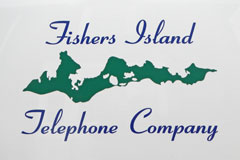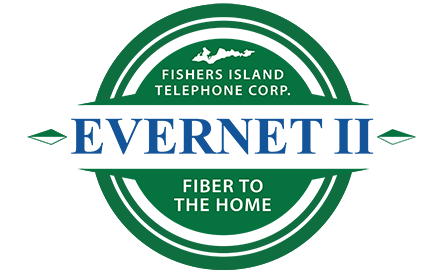FIEC Power Outage Report for 27AUG23

Wednesday, August 30, 2023
Dear Fishers Island Community:
Please join us in thanking the crews of the electric, telephone, and water companies on Fishers Island and the team at Groton Utilities for their collective efforts this past Sunday to limit the duration of power outages on the island while fixing a serious line failure in Groton. The responsiveness and competence of these professionals during an emergency, on a summer Sunday,, was a reminder that we are fortunate to have them working for our island community.
Power was lost at 10:24 a.m. August 27, 2023, and Electric superintendent Jay Cushing immediately alerted Groton Utilities. Electric crew members Matt Larson and Harrison Hall joined Jay on duty within fifteen minutes of the outage and within 45 minutes confirmed the system failure was in Groton.
At 11:30 a.m. crews mustered by Groton Utilities found a fault in the circuit dedicated to sending power to the transformer at Groton Long Point that feeds the submarine cable to Fishers Island. It became apparent that the fault in Groton would take time to pinpoint and rectify. Fishers Island Electric asked Connecticut Municipal Electric Energy Cooperative (CMEEC) to fire up its generator, located near Dock Beach, to power the island. In that way, power was restored at 11:51 a.m.
During the morning, Fishers Island Electric had an outage notice posted on Fishnet, and paper notices were posted at the post office, Village Market, both cafés and outside Shutters and Sails. The fire chief, school superintendent, ferry manager, Community Center, Goose Island gas station, and the three clubs were all notified directly. As a precaution, a telephone crew set up an emergency generator at Top of the World to power the island’s microwave link to the mainland.
Power was lost again at 5:00 p.m. when a surge in energy demand caused the CMEEC generator to overheat and trip off. In order to reduce demand, water superintendent Chad Mrowka switched off the high lift pumps in the surface water plant at Middle Farms. The generator faults were cleared, and the generator was restarted. Power was restored on the island at 6:10 p.m.
The CMEEC generator ran through Sunday night while Groton Utilities worked to replace 300 feet of underground cable in the faulty circuit to the Fishers Island submarine cable. Fishers Island Electric arranged a 6:00 a.m. Monday fuel delivery by truck to the generator in case it would have to run longer.
In the event, the generator was shut off at 6:19 a.m. on Monday so that the power supply via the submarine cable could be restored three minutes later at 6:22 a.m.
In short, although it took nearly twenty hours to fix the fault in Groton, Fishers Island was without power for less than three hours in total, thanks in large part to the island’s utilities team.
We would also like to thank Jane Ahrens, for assisting with posting community updates on FishersIsland.net during the day Sunday, and Dave McCall and Captain John Haney at the Fishers Island ferry, for organizing on short notice the special ferry run for the generator fuel truck early Monday.
Chris Finan, President Tom Siebens, Chairman










